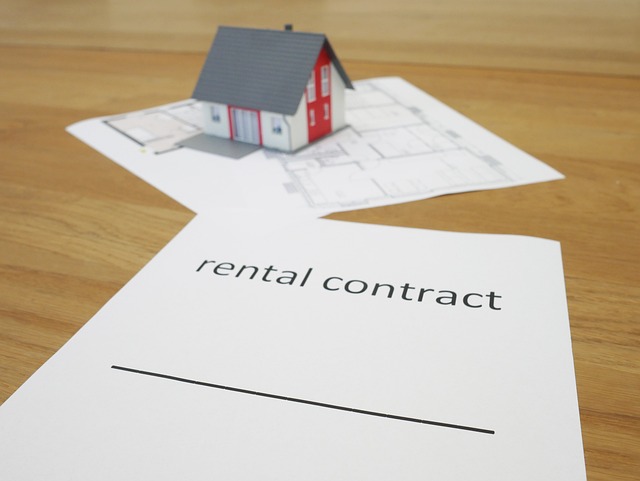Rent to Own: An Attractive Alternative for Becoming a Homeowner
The real estate market can sometimes seem inaccessible to many households. However, there are alternative solutions that can help people move closer to their dream of homeownership. Among these options, Rent to Own (RTO) stands out as an appealing opportunity. This article explores in detail how the scheme works, its benefits, and the key points to consider before committing to such a program.

Rent-to-own agreements blend a lease with a future option to purchase, offering a practical path for aspiring buyers across the United States who need time to build savings or strengthen credit. Unlike a traditional rental, a portion of your payments may be set aside toward a potential purchase, and the future buy price is often outlined in advance. This hybrid model can provide clarity on costs, guard against fast-rising prices, and let you experience the property and community before committing to a mortgage.
What is a rent-to-own property?
A rent-to-own property is a home you lease today with the right—or obligation, depending on the contract—to buy it later. There are two common structures: lease-option, which lets you decide whether to buy at the end of the term, and lease-purchase, which typically requires you to buy. Agreements often include an upfront option fee, monthly rent (sometimes with credits toward purchase), a pre-set purchase price or pricing formula, and a timeline, commonly 1–3 years. Responsibilities for maintenance and repairs vary by contract.
How do rent-to-own programs work?
Most programs begin with an application and eligibility review. After approval, you select an eligible home within a defined price range. The provider or seller acquires the property (or already owns it), and you sign a lease plus an option or purchase agreement. During the lease, you make monthly payments and may accumulate credits that can be applied to closing costs or a down payment if you buy. Near the end of the term, you secure mortgage financing to purchase at the agreed price; if you do not buy, you typically continue renting, move out, or follow the program’s stated exit rules.
What are the advantages of the rent-to-own model?
Rent-to-own can help you move into a home sooner while working on mortgage readiness. Benefits may include time to improve credit, predictable savings toward a down payment, and the ability to lock in a future purchase price. You can also evaluate the neighborhood, commute, schools, and local services in your area before committing. Potential trade-offs include nonrefundable fees, higher total monthly costs than a standard lease, and the risk of losing credits if you do not purchase. Clear, detailed contracts help set expectations and reduce surprises.
What types of properties are offered through rent-to-own?
Availability varies by market, but single-family homes and townhouses are the most common. Some programs allow condos or new construction if they meet underwriting rules and homeowners association policies. Price caps and eligibility criteria typically apply, and certain home conditions, locations, or property types may be excluded. If you need specific features—such as accessibility upgrades or space for multigenerational living—confirm eligibility before you shop. A professional inspection and review of disclosures are essential, just as with a traditional purchase.
How can you compare rent-to-own offers?
Start by mapping the total cost of the path to ownership. Compare the option fee or move-in funds, monthly rent, any rent premium above market rates, how rent credits work, the pre-set purchase price (and any annual increases), maintenance responsibilities, early termination rules, and whether payments are reported to credit bureaus. Review eligibility requirements, property selection rules, and customer support. The brief snapshots below show how several U.S. providers structure their programs at a high level; always verify current terms directly with the provider.
| Product/Service | Provider | Cost Estimation |
|---|---|---|
| Rent-to-own program | Divvy Homes | Typically involves an initial home-savings contribution at move-in, market-based rent with a portion credited toward a future purchase, and a pre-agreed buy price that may adjust annually. Actual amounts vary by market and approval. |
| Lease with Right to Purchase | Home Partners of America | Application and move-in funds required; rent aligned to local markets; right to buy at pre-set prices scheduled by year. Security deposits and fees vary by home and location. |
| Buy and rent-back with path to mortgage | Landis | Market rent plus a structured savings plan aimed at achieving mortgage approval; no traditional option fee in many cases, but program terms and costs vary by market and profile. |
| Lease-to-own program | Dream America | Move-in funds and program fees apply; monthly rent with potential credits; purchase targeted when down payment and financing milestones are met. Specific costs differ by home and city. |
| Lease-to-own financing | Trio | Move-in funds and program fee may apply; monthly payment can include a savings component; purchase price and terms are pre-agreed with variations by market and eligibility. |
Prices, rates, or cost estimates mentioned in this article are based on the latest available information but may change over time. Independent research is advised before making financial decisions.
Real-world pricing insights: Across U.S. programs, option or move-in fees commonly fall in the low single-digit percentage of the agreed purchase price. Monthly payments can be slightly above comparable market rent, with a portion credited toward a future purchase in some models. Purchase prices are frequently set upfront with scheduled annual increases. Credits are usually forfeited if you do not buy, and you may be responsible for certain maintenance items—review these details carefully in each contract.
Conclusion Rent-to-own can be a practical route to homeownership if you need time to strengthen your mortgage profile, want clarity on future pricing, or prefer to experience a home before you buy. By understanding how contracts work, weighing benefits against risks, and comparing providers on total cost, purchase terms, and responsibilities, you can evaluate whether a lease-option or lease-purchase structure aligns with your budget and long-term plans.




